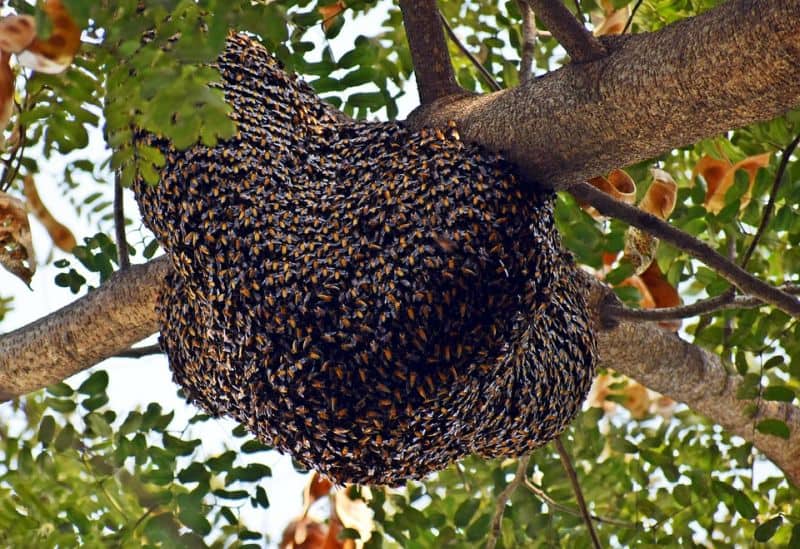Finding a wild beehive in a backyard tree or hundreds of bees living inside of a wall of your home can be quite an unwelcome discovery.
Beekeepers, both of the amateur backyard variety as well as professionals, often accept requests to remove bees from a home or yard – making bee removal necessary. So why do beekeepers want to charge me to remove bees?
Beekeepers charge you for bee removal because it is a skilled and time consuming process. While they might provide this service for free if they get to keep the bees, finding such a bargain can definitely be difficult.

If the bees being removed have never been sprayed an apiarist (beekeeper) may only charge a nominal gas or traveling fee as a matter of reimbursement for their services.
Bee removal should involve not just getting the bees from an unwanted spot, but removing the hive as well. Making sure you got every last bee and the hive from an outdoor or especially indoor location, is not quick work. Typically a beekeeper will charge not a set fee for the bee removal service, but work on an hourly basis.
How Much Does Bee Removal Cost?
Removing the bees may take only a few hours, or it could require two or more trips and additional help, depending upon where the bees were found and how large or aggressive the colony members are behaving.
The price a beekeeper charges varies not only by the size of the removal project, but also by geographic location. If you live in an area where many amateur and professional beekeepers exist, the cost of a beehive removal will likely be less due to market competition.
Expect to pay at least $50 and up to $500 for a bee removal – again, factoring in the beekeeping activity in your area and the size of the bees being removed. The costs of having a beekeeper remove a hive are often on par with that of calling a pest removal agency.
The primary difference between the two services is, first the saving of the little pollinators, and the use or lack of use of potentially caustic agents being sprayed around or inside of your home to flush out or kill the bees.
Do Beekeepers Kill Bees During A Removal?
It is common for a beekeeper to use his or her trusty beehive smoker to entice the bees to leave the area they have chosen to call home. Using a smoker or simply by burning paper or straw beneath the area where the bees created a colony will not harm them during their exit.
If bees have made a home inside of your wall, they can do a lot of damage in a small amount of time. The weight of a large bee colony living inside of your walls may cause structural damage of not just the walls, but the roof and chimney, as well.
Once the bee colony has matured and produced honey in addition to the heavy honeycombs, it will start to seep down the interior structures of the home and attract ants, mice, rats, and other unwanted pests and small critters.
A former co-worker heard buzzing in her wall and kept trying to trace the sound and find a way to get the bees out. Thankfully, she and her husband had no luck tracing the happy sounds of the bees.
Once they finally called a beekeeper to conduct a bee removal, he found THOUSANDS of bees living through an entire wall section on the first to the second story of their home. The damage done to the interior of the walls at this point was both extensive and costly to repair.
Never wait longer than absolutely necessary to call a beekeeper to do a bee removal from inside of your home; the cost of the entire process will just mount.
Bee removals should always be left to processionals. Even if you do not have a bee allergy, getting stung repeatedly by dozens of bees could still be very dangerous.
Worse yet, what you think are bees living inside of your walls or a covert sport outdoors just might be wasps or hornets – will are almost always aggressive, and more prone to both attacking and swarming.

Tara lives on a 56 acres farm in the Appalachian Mountains, where she faces homesteading and farming challenges every single day, raising chickens, goats, horses, and tons of vegetables. She’s an expert in all sorts of homesteading skills such as hide tanning, doll making, tree tapping, and many more.
